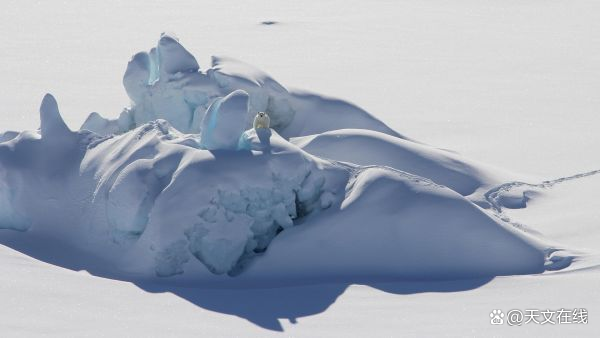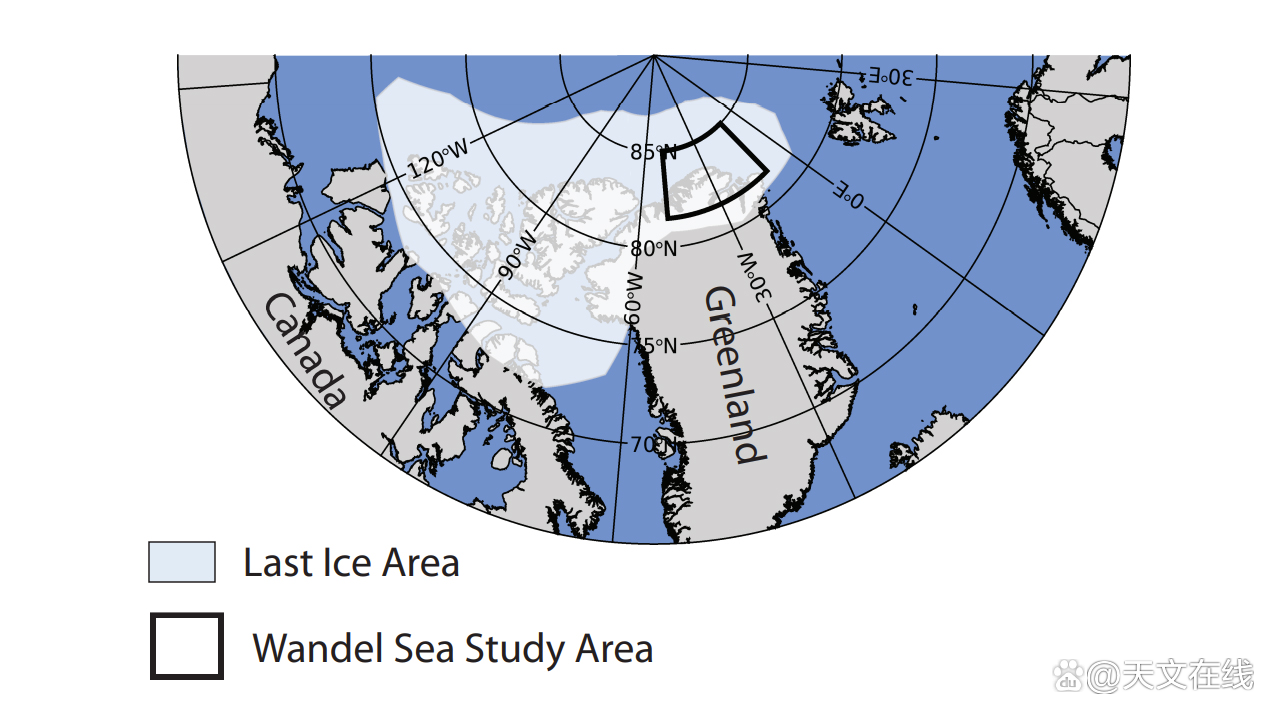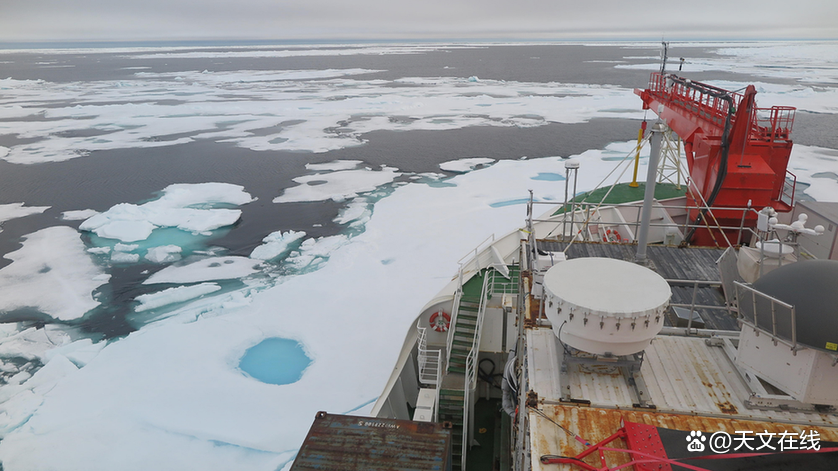Due to global warming, the thickest and oldest Arctic sea ice is disappearing
Author:Astronomy online Time:2022.09.26

In March 2016, a polar bear inhabited the thick sea ice in the northern part of Greenland. These thicker and older sea ices do not make this place avoid the loss of summer ice sheet.
(Picture source: Christine Led/University of Washington)
Final ice area
A new study shows that "the last ice area" is a Arctic region known for its extremely thick ice, which is very vulnerable to climate change.

This frozen belt is located in the northern part of Greenland, named after the characteristics of seasonal growth and contraction. Most of the sea ice here is enough to stabilize the thickness of the summer.
However, in the summer of 2020, Wan Dehai, located in the east of the last ice area, lost 50%of ice covering. This area was the lowest level since the record. Researchers have found that weather conditions have affected the decline in the number of glaciers because climate change has made the region's long -term ice layer thinner. This shows that the global warming threat to the region may be greater than the previous climate model.

Climate change melts in the ice layer in other parts of the Arctic, which may bring survival problems to animals that depend on sea ice breeding, hunting and foraging, because the research co -author Christine Led said that the final ice area is "the Arctic is in the future. Relying on the refuge of the ice species in the middle of the ice -free summer. " Ryder is also the chief researcher of the Gendan Science Center and a assistant professor at the School of Aquatic and Fisheries Sciences at the University of Washington. Ryder Email "Life Science": "If the change in the region exceeds expectations, then it is not a refuge for us."
Finally, the ice area stretched more than 1,200 miles (2000 kilometers), extending from the northern coast of Greenland to the west of the Canadian Arctic Islands. The sea ice there has been existed at least 5 years, about 13 feet (4 meters) thick.
Abnormal

This study focused on the Wan Dehai north of Greenland, which is located in the "last ice zone" of the Arctic Ocean. (Photo source: Schweig and others/"Communication-Earth and the Environment")
In recent decades, the large ice floating from the ocean flow has replenished the ice cover in the final ice area. However, the researchers found that the North Wind in 2020 blown away from Greenland Island, forming a broad waters, and the waters were heated by the sun. Axel Schwig, chairman of the University of Washington, said that the heated water circulated under the sea ice and more sea ice was melted.
Shiweig Email informs the "Life Science" magazine. Since 2018, polar scientists have begun to doubt that there may be abnormalities in the ice area: at that time, an open waters surrounded by column appeared in February, called Binguma Lake.
In 2020, Schweig and his colleagues were collecting data for a Arctic Research Inspection Team called the "Arctic Climate Research Multi -Disciplinary Disciplinary Watching Station" (the team conducted inspections from September 2019 to October 2020). Note another sea ice abnormalities in Wan Dehai.
When scientists are predicting where the ship might drift, they noticed that the ship was passing the "a strange route" through the area covered by thick ice. Schweig said: "We started to want to know what happened, why it happened, and whether it had a potential connection with the situation we observed in 2018."

When scientists are predicting where the ship might drift, they noticed that the ship was passing the "a strange route" through the area covered by thick ice. "We started to know what happened, why it happened, and whether it had a potential connection with the situation we observed in 2018."
On the ice
Satellite observations and climate models show that in 2020, unusual North Wind broke the sea ice and pushed it away from Wan Dehai. Schweig said that thanks to the thick ice drift here in the winter of 2020, otherwise the new low sea ice coverage will be lower.
Because of climate change gradually disappearing in the final ice area, these losses have occurred. Researchers believe that about 20%of ice loss in 2020 can be directly attributed to climate change, and 80%are related to abnormal winds and sea flow.

The minimum range of the Arctic Ice Link has appeared in the past 15 years. Climate forecast shows that except for the final ice area, the summer sea ice in the North Pole may disappear as soon as 2040. According to "Life Science" in October 2020, last year, the National Ice and Snow Data Center found that the minimum value of the Arctic Sea Ice reached the second lowest point in history (since 2012). Scientists said that although the scope of new research is only Wan Dehai, the data shows that the summer sea ice in the last ice area may also face risks.
Ryder told the "Life Science" magazine that the disappearance of ice has affected the Arctic animals, relying on ice -survive animals, such as polar bears, leopard and bearded seals, "sometimes unicorn and bow whale."

Schweig said that although the new research does not show whether the final ice area or when it will be completely melted, the trend of melting is accelerating and will not stop.
"According to our research results, we expect a large area of open waters to appear in this area." Laude said that such changes have a difficult impact on marine wildlife, and it is difficult to predict.
By: Mindy Weisberger
Fy: Mu Yishan
If there is related content infringement, please contact the author to delete after the work is released
Reprinted, please obtain authorization, and pay attention to maintaining integrity and indicating the source
- END -
International Observation 丨 6.6 million Americans may have brain damage due to the new crown, and the US epidemic prevention work has been approved "messed up"
On September 22, local time, according to data from Johns Hopkins University in the United States, as of 17:21 on the day of the Eastern Time (at 5:21 am on September 23, Beijing time), a total of 959
New crisis!Ukrainian granary burst, and there is nowhere to storage to cause summer grain to be abandoned

[Global Times special reporter Wu Duok Xiao Wanning Global Times reporter Yang Sha...